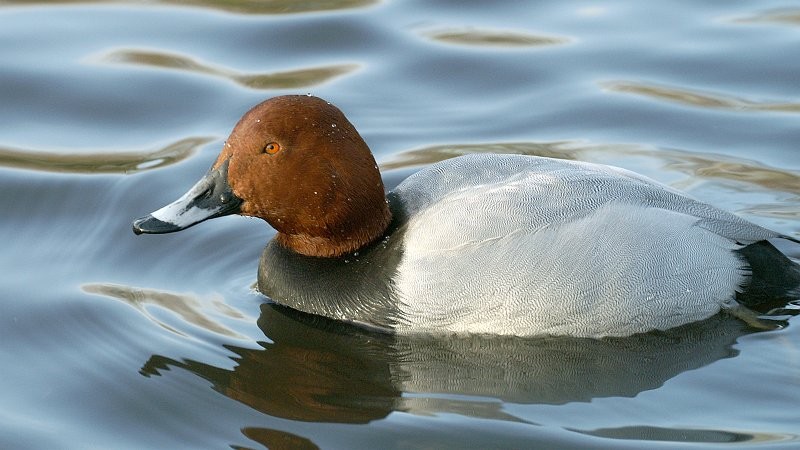Common Pochard
A species of Diving ducks Scientific name : Aythya ferina Genus : Diving ducks
Common Pochard, A species of Diving ducks
Botanical name: Aythya ferina
Genus: Diving ducks
Content
Description People often ask General Info
 Photo By Ken Billington , used under CC-BY-SA-3.0 /Cropped and compressed from original
Photo By Ken Billington , used under CC-BY-SA-3.0 /Cropped and compressed from original Description
The common Pochard is a mid-sized duck that dives into the water in search of food. It is often seen in reservoirs and lakes edged with reeds. During the winter, the diving duck can even be found in the ocean searching for aquatic plants, small fish, and snails.
Size
42 - 58 cm
Colors
Black
Red
Gray
White
Life Expectancy
10 years
Nest Placement
Ground
Feeding Habits
Common Pochard primarily consumes aquatic vegetation, supplemented by molluscs, insects, and fish. These diving and dabbling birds are equipped with unique dietary adaptations for underwater foraging.
Habitat
Common Pochard thrives in freshwater areas including marshes, lakes, and rivers, favoring eutrophic to neutral waters with vegetation. In breeding seasons, they adapt to various water types, including saline and brackish lakes. Winter habitats extend to larger bodies such as reservoirs and coastal lagoons across temperate to northern Palearctic, with migrations toward southern and western Europe.
Dite type
Aquatic invertebrate eater
People often ask
General Info
Feeding Habits
Bird food type
Distribution Area
Their breeding habitat consists of marshes and lakes with a metre or more water depth. Pochards breed in much of temperate and northern Europe and across the Palearctic. They are migratory, and spend winter in the south and west of Europe. In the British Isles, birds breed in eastern England and lowland Scotland, in small numbers in Northern Ireland with numbers increasing gradually, and sporadically in the Republic of Ireland, where it may also be increasing. While uncommon, individuals are also occasionally seen in the south of England, and small populations are sometimes observed on the River Thames. Large numbers stay overwinter in Great Britain, after the birds retreat from Russia and Scandinavia. 
Species Status
VULNERABLE